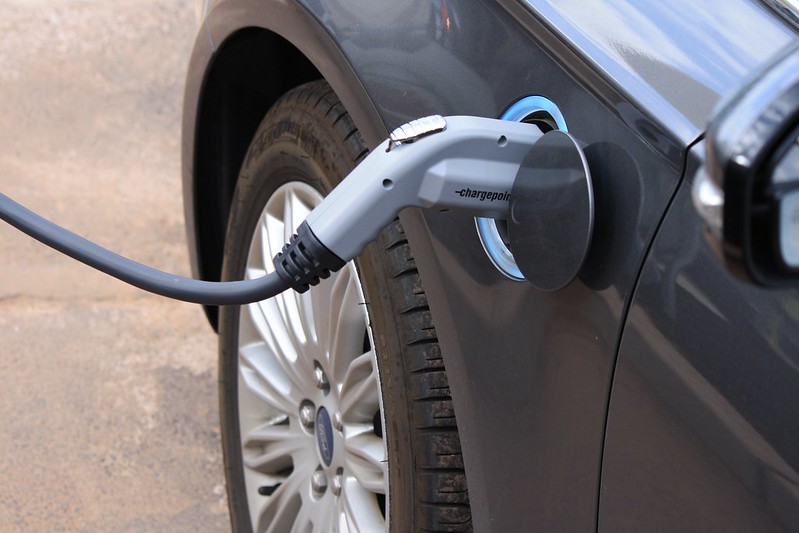What’s Complicated about Charging Your Electric Car?
Debunking the Fear Around Charging Your EV
By Steve Wehr | Winter 2020 | Clean Power Guide
For most people, the answer to this question is: “Nothing, really.” Charging your electric car is easier and much less costly than going to the gas station. It’s just that it’s so different from what we have always done. There is new terminology to learn, new habits to form, and maybe new equipment to buy. Feeling comfortable that you can easily and conveniently charge your electric car is one of the keys to feeling comfortable enough to purchase an electric car.
You will mostly charge at home, but may also charge at certain destinations, or while travelling. Home charging can take 8 to 40 hours to get a full charge from near empty, depending on the equipment in your home. Destination charging can take several hours for a full charge, while travel chargers can charge your car in less than an hour, often less than 30 minutes.
Home Charging
For most Electric Vehicle (EV) owners, charging at home is how you will charge 90 to 95 percent of the time. When you get home at the end of the day, you can plug in your car and you will have a full “tank” the next morning.
You have several options for how to plug in at home:
120V outlet. Almost all EVs include a “Level 1” charger that can be used in a 120V outlet. You can expect to get about 40-60 miles of range charging for 12 hours.
240V outlet. You can have an electrician install one of these in your garage or parking space for about $250. Your car’s included charger may include a plug to use this type of outlet, or you may be able to buy one from your dealer. You can expect to get about 80 to 140 miles of range charging for 12 hours.
Dedicated EV charger. Many companies sell home chargers that are wired directly into your service panel. These will add 20 to 40 miles of range per hour. You will pay about $500 for the charger hardware, and $500 to install it. You can lower this cost by taking advantage of incentives from the federal and state governments, or from your utility.
Destination Charging
As the name implies, this type of charging is used when you are stopping at a “destination” for an hour or more—a hotel, restaurant, or shopping mall. These are “Level 2” chargers that will add 20 to 40 miles of range per hour. All electric cars have sockets that accept the plugs from these chargers, or if you have a Tesla you can use an inexpensive adapter. Expect to set up an account with each company in order to use these chargers.
ChargePoint is by far the largest provider of these chargers, with hundreds of them in the Hudson Valley alone. Many of these are provided by municipalities for free.
Travel Charging
All of these charging stations will charge you for a rapid charge. You will need to setup an account ahead of time to use most of these chargers, but some do offer credit card payment options, so no account needed.
For Tesla cars, you can take advantage of the Tesla Supercharger network, with over 1,000 charging stations in the US. Cost is typically about $13 for a full charge. Tesla cars use their own proprietary charging socket, but can also use all the networks below with a $500 adapter.
For all other cars, they typically use the “CCS Combo” socket in order to use travel chargers, or if you have a Nissan Leaf, then you will use a socket named CHAdeMO. You have your choice of many charging networks that have both plugs. Prices can vary widely by network and location. As of September of this year, you can use networks such as Electrify America, EVgo, Chargepoint, and Greenlots; New York State is installing fast chargers on major state highways. In the Hudson Valley region, these chargers cost about $14 to $20 for a full charge.
To find a charger, use the PlugShare app to list chargers from all companies. Also, your car’s GPS may tell you if you need a charge before you arrive at your final destination, and route you to a compatible charger.
Bye-Bye Gas Stations
The charging infrastructure is growing rapidly throughout the country, and especially in New York State and the Hudson Valley. Talk to owners, ask them about their experiences. You’ll find that charging really is much less complicated than you may think. New habits are pretty easy to form. And you really won’t miss gas stations.

Steve Wehr is a retired engineer and EV enthusiast.
